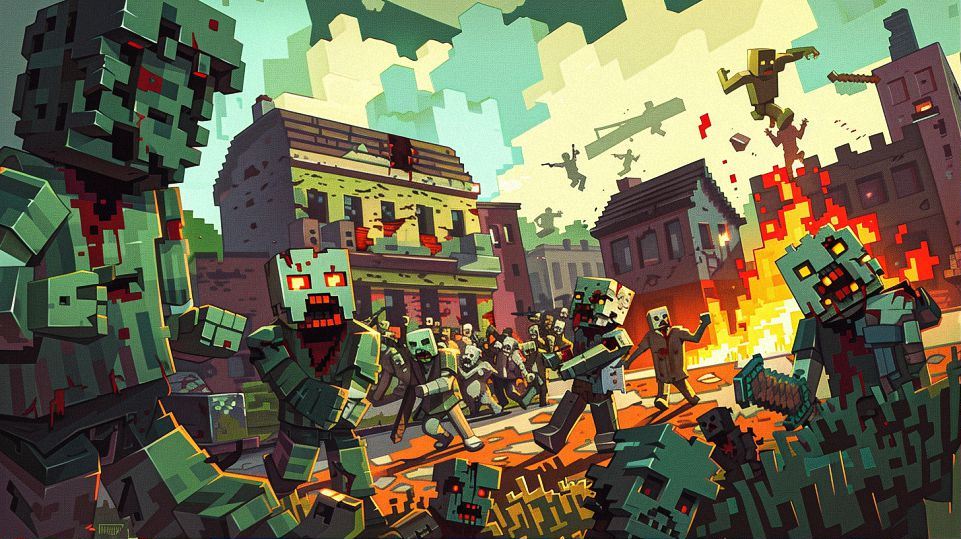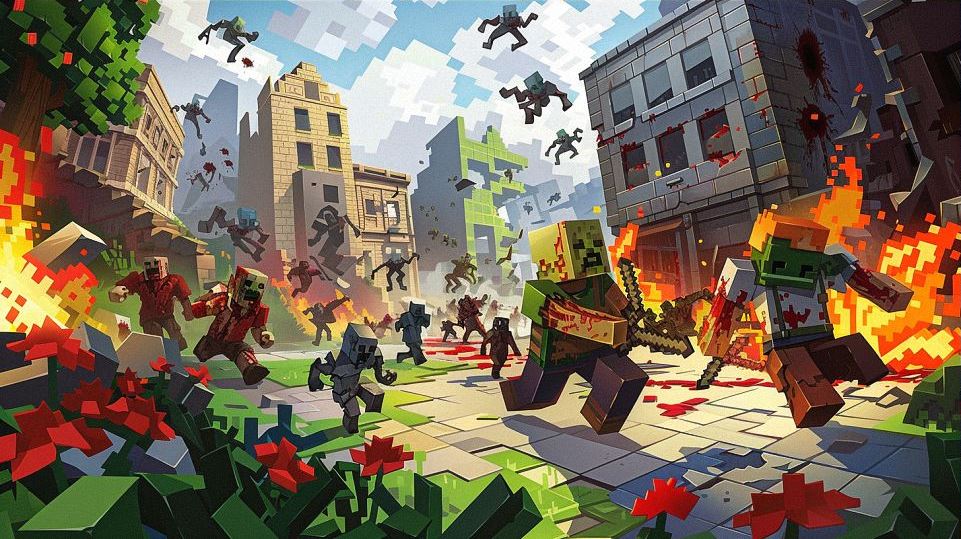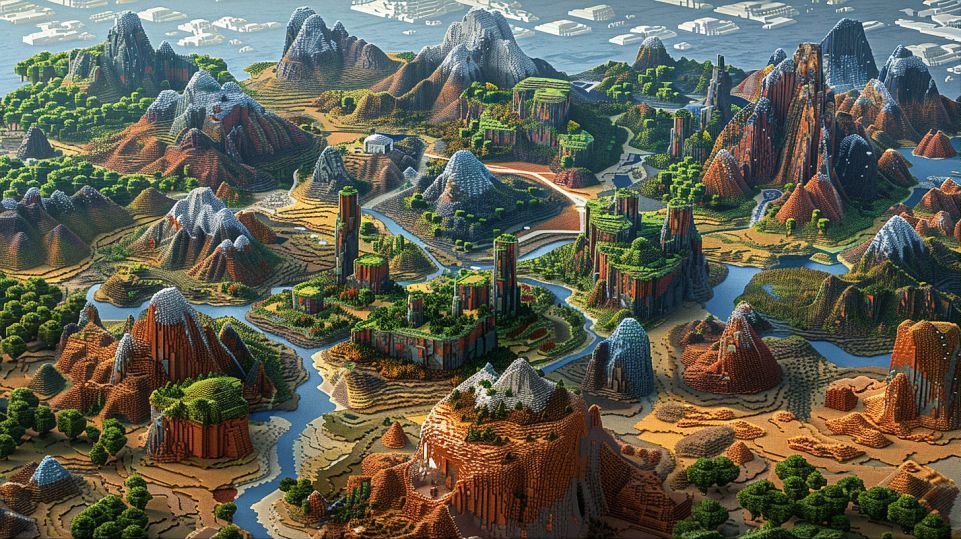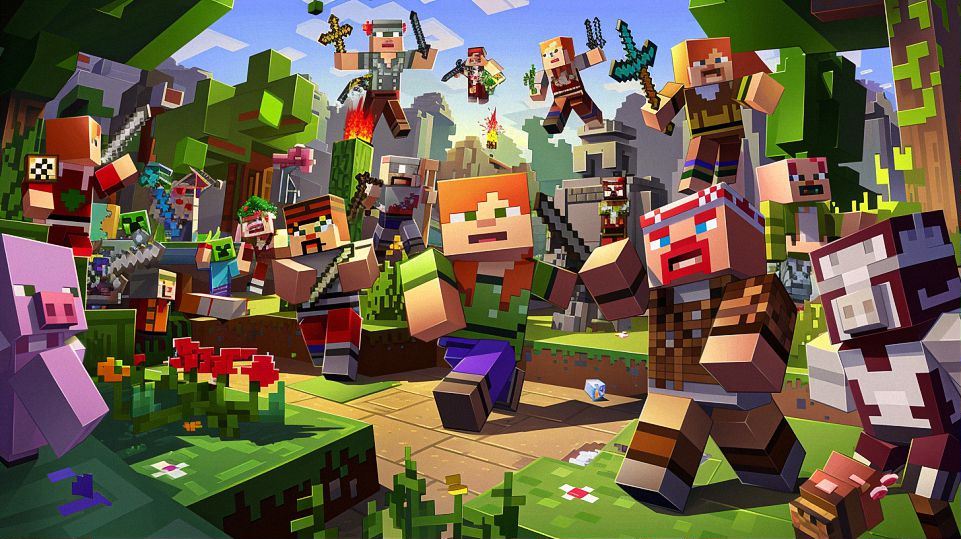City in Minecraft: Ultimate Guide to Building


Building Your Minecraft City: Getting Started
Choosing the Perfect Location
When it comes to building a city in Minecraft, the first step is choosing the perfect location. This decision can make or break your entire project. But how do you pick the best spot?
Contents
ToggleConsider the Terrain: Look for a flat area with plenty of space. Plains biomes are ideal because they offer vast stretches of flat land, which makes building easier. Avoid mountainous regions unless you’re ready to do a lot of terraforming.
Access to Resources: Ensure your chosen location has easy access to essential resources. Wood, stone, water, and food sources should be nearby. Forests and rivers can provide the materials needed for early construction.
Aesthetics Matter: Think about the scenic value of your city. Building near a coastline, a river, or with a stunning mountain backdrop can add to the charm and appeal of your city. It makes your Minecraft city not just functional, but also visually stunning.
Transportation Links: Make sure your location is central and connected. It’s beneficial to be near existing villages or your previous builds. This proximity allows for easier trade and interaction with villagers and easier expansion in the future.
Gathering Essential Resources
Before you lay the first block of your city in Minecraft, you’ll need to gather essential resources. Building a city is resource-intensive, and preparation is key.
Wood and Stone: Start by collecting large amounts of wood and stone. These are the primary building materials for early structures. Wood can be harvested from trees, and stone can be mined from underground.
Iron and Coal: Iron is crucial for crafting tools and armor, while coal is needed for smelting and lighting. Find a nearby cave or start a mining operation to gather these resources. Create torches to light up your mining tunnels and avoid mob spawns.
Sand and Clay: For more advanced buildings, gather sand and clay. Sand can be smelted into glass for windows, and clay can be used to create bricks. Look for these materials near rivers and lakes.
Food Supplies: Ensure you have a steady food supply to sustain your building efforts. Create farms for wheat, carrots, and potatoes. Alternatively, breed animals like cows, pigs, and chickens for a renewable food source.
Special Materials: For more advanced projects, gather materials like redstone, gold, and diamond. These will help you create automated systems and luxury items for your city.
Planning Your City Layout
Now that you have your resources, it’s time to plan your city layout. A well-planned city is efficient, easy to navigate, and aesthetically pleasing.
Create a Blueprint: Sketch out your city on graph paper or use a digital tool to design your layout. Plan where each building and street will go. Think about residential, commercial, and industrial zones.
Zoning Areas: Divide your city into zones. Residential areas should be quiet and peaceful, while commercial zones can be bustling with shops and markets. Industrial zones, where you’ll have your smelters and crafting tables, should be slightly removed from the residential areas to avoid noise and pollution.
Roads and Paths: Design a network of roads and paths to connect different areas of your city. Use materials like cobblestone or gravel for roads. Make sure paths are wide enough for easy travel and consider adding streetlights for nighttime visibility.
Public Spaces: Plan parks, plazas, and other public spaces. These areas provide places for villagers to gather and interact, making your city feel more alive. Add benches, fountains, and gardens to make these spaces inviting.
Expansion Potential: Leave room for future expansion. As your city grows, you’ll need space to add more buildings and infrastructure. Plan for additional districts or suburbs that can be developed later.
Unique Landmarks: Think about adding unique landmarks that make your city stand out. Whether it’s a towering castle, a grand cathedral, or a modern skyscraper, landmarks can give your city a unique identity and help with navigation.
By carefully choosing your location, gathering essential resources, and planning your layout, you’ll be well on your way to creating an amazing city in Minecraft. Happy building!

Essential Structures for a Minecraft City
Constructing Residential Areas
Creating comfortable and appealing residential areas is essential for any thriving Minecraft city. But how do you design homes that your villagers will love?
Variety of Homes: Start by building different types of houses to cater to various tastes and needs. Include simple cottages, cozy bungalows, and multi-story apartment buildings. Use diverse materials like wood, stone, and brick to give each home a unique look.
Functional Interiors: Don’t just focus on the exterior, make sure the interiors are functional too. Each house should have a bed, a crafting table, and storage chests. Adding personal touches like paintings, flower pots, and bookshelves can make homes feel more lived-in and welcoming.
Neighborhood Planning: Plan your neighborhoods with care. Include wide streets for easy navigation and add sidewalks or paths for pedestrians. Plant trees along the roads to create a green, pleasant environment. Consider adding streetlights for nighttime visibility and safety.
Community Areas: Residential areas should also have community spaces like parks, playgrounds, and small gardens. These spaces allow villagers to socialize and relax, making your city feel more alive and dynamic.
Building Commercial and Industrial Zones
Your Minecraft city won’t be complete without bustling commercial and industrial zones. These areas are vital for the city’s economy and provide necessary services and goods.
Shops and Markets: Start with building shops and markets where villagers can trade goods. Create a variety of stores like a butcher shop, bakery, blacksmith, and general store. Use colorful signs and banners to attract customers and make each shop distinctive.
Workshops and Factories: Industrial zones should include workshops and factories where items are produced and repaired. Build large structures with ample space for machinery and storage. Use materials like iron and stone to give these buildings a sturdy, industrial look.
Warehouses: Add warehouses for storing surplus goods. These buildings should be spacious and strategically located near both industrial and commercial zones to facilitate easy transportation of items.
Transportation Infrastructure: Ensure your industrial zones are well-connected with roads, railways, or even shipping docks if you’re near water. This infrastructure is crucial for moving goods efficiently throughout your city.
Designing Public Spaces and Parks
Public spaces and parks are the heart of any vibrant Minecraft city. These areas provide relaxation, recreation, and a sense of community.
Central Park: Design a large central park with plenty of greenery. Include walking paths, benches, ponds, and fountains. Add flower beds and trees to create a lush, inviting environment where villagers can unwind.
Playgrounds: Build playgrounds with slides, swings, and climbing structures. Use colorful wool and other vibrant materials to make these areas fun and appealing for both villagers and players.
Plazas and Squares: Create plazas and town squares where villagers can gather for events or social interactions. Decorate these areas with statues, fountains, and seating arrangements. Paved with stone or brick, these spaces can become the focal points of your city.
Gardens: Add small gardens throughout residential and commercial areas. These can be simple flower beds, vegetable patches, or even elaborate botanical gardens with exotic plants. Gardens provide beauty and a touch of nature in an urban setting.
Adding Essential Services: Hospitals, Schools, and Police Stations
For a truly functional Minecraft city, you’ll need to include essential services like hospitals, schools, and police stations. These facilities ensure the well-being and safety of your villagers.
Hospitals: Build a hospital equipped with beds, medical supplies, and a waiting area. Use white and red blocks to create a recognizable design. Inside, add details like examination rooms, operating theaters, and recovery wards to simulate a real hospital environment.
Schools: Construct schools to educate young villagers. Design classrooms with desks, blackboards, and bookshelves. Add a playground outside for recess and a library stocked with books for students to read. Schools can also include specialized rooms like science labs or art studios.
Police Stations: Ensure your city is safe by building police stations. Design these buildings with offices, holding cells, and a reception area. Use materials like stone and iron bars to create a secure and authoritative appearance. Consider adding patrol vehicles or horses for a more immersive experience.
Fire Stations: Don’t forget fire stations to handle emergencies. Equip them with fire trucks or water buckets, and include a training area for firefighters. Use red and white blocks to make these buildings stand out.
By focusing on these essential structures, you’ll create a Minecraft city that’s not only functional and efficient but also a delightful place for villagers to live, work, and play. Happy building!

Enhancing Your Minecraft City with Advanced Features
Integrating Redstone for Automation
Redstone is the magic of Minecraft that can turn your city into a technological marvel. Integrating redstone for automation can streamline many aspects of city life, making it more efficient and fun to interact with.
Automatic Doors and Lights: Start with the basics by setting up automatic doors and lights. Pressure plates or tripwire hooks can activate doors without the need for manual opening. Redstone lamps connected to daylight sensors can automatically light up the city at dusk and turn off at dawn, conserving resources and adding a touch of realism.
Transport Systems: Use redstone to automate your transport systems. Create minecart stations with redstone-powered rails and detectors that send carts off when passengers board. This makes commuting within your city smooth and hassle-free.
Farming Automation: Automate your farms to ensure a steady supply of food and resources. Redstone mechanisms can control water flows to harvest crops, while hoppers and chests can collect and store the yield. This frees up your time to focus on other aspects of city building.
Security Systems: Enhance city security with redstone-based alarms and traps. Pressure plates or tripwire hooks connected to note blocks can alert you to intruders. For more advanced security, set up piston doors or lava traps that activate when unwanted guests enter restricted areas.
Creating Transport Systems: Roads, Rails, and Subways
A well-connected city is a thriving city. Creating efficient transport systems, including roads, rails, and subways, is crucial for seamless movement and trade.
Road Networks: Design wide and well-marked roads to connect different parts of your city. Use materials like cobblestone or concrete for the road surface, and add sidewalks with slabs or planks. Streetlights, made from redstone lamps or glowstone, ensure visibility during the night.
Rails and Stations: Establish a rail network for quick travel. Build minecart tracks connecting key locations such as residential areas, commercial zones, and industrial districts. Create stations with platforms, ticket booths, and waiting areas to enhance the travel experience.
Subways: For an underground transport system, dig tunnels and lay down rail tracks to create subways. Design stations at strategic points and add signage for easy navigation. Subways are not only efficient but also save surface space for other structures.
Bridges and Tunnels: In hilly or water-crossed areas, build bridges and tunnels. Use stone bricks for durability and aesthetics. Ensure they are wide enough for both pedestrians and minecarts, providing versatile transit options.
Adding Unique Landmarks and Attractions
Every great city needs landmarks and attractions that make it unique and memorable. These structures not only beautify the city but also serve as points of interest for visitors and residents alike.
Iconic Buildings: Construct iconic buildings such as a towering castle, a grand cathedral, or a futuristic skyscraper. Use varied building materials and intricate designs to make these landmarks stand out.
Statues and Monuments: Add statues and monuments to commemorate important events or figures. Build statues using materials like stone, iron, or even gold to give them a majestic look. Monuments can be surrounded by gardens or plazas to enhance their appeal.
Parks and Gardens: Create beautiful parks and botanical gardens as urban oases. Include walking paths, benches, fountains, and a variety of plant life. These spaces provide a peaceful retreat from the bustling city life.
Amusement Parks: For a fun attraction, build an amusement park with rides and games. Roller coasters, Ferris wheels, and merry-go-rounds can be created using minecarts and redstone. Add stalls with mini-games and prizes to complete the experience.
Implementing City Defense Mechanisms
To protect your city from threats, implementing robust defense mechanisms is essential. This ensures the safety of your villagers and the integrity of your structures.
Walls and Gates: Start with strong walls surrounding your city. Use materials like stone bricks, cobblestone, or obsidian for durability. Add gates with redstone mechanisms for controlled access.
Watchtowers: Build watchtowers at strategic points along the walls. These towers should be tall enough to provide a clear view of the surrounding area. Equip them with bows, arrows, and lookout points for early threat detection.
Traps and Alarms: Set up traps and alarms around the city to deter intruders. Use pressure plates, tripwire hooks, and pistons to create hidden traps that activate when an enemy steps on them. Note blocks connected to redstone can serve as alarms to alert you of breaches.
Guard Posts: Establish guard posts within the city. These can be small buildings where you station iron golems or even villagers designated as guards. Equip them with weapons and armor for effective defense.
By integrating these advanced features, your Minecraft city will not only be efficient and visually stunning but also a safe and enjoyable place to explore. Happy building!


